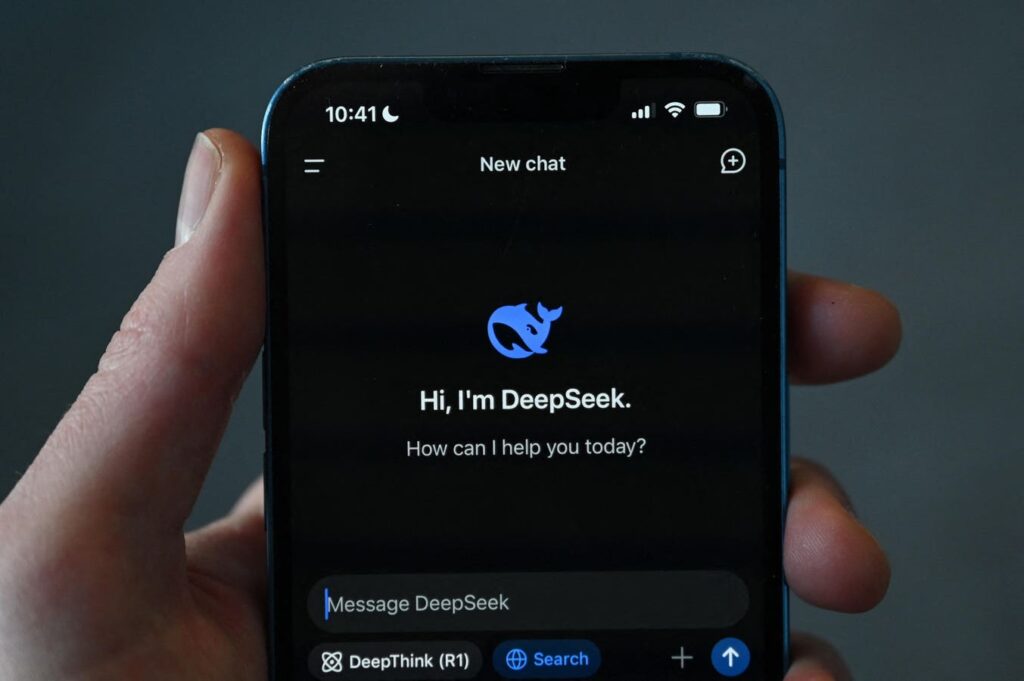Just a week after launching its R1 artificial intelligence model, DeepSeek took the title for most downloaded free app in the United States. Curious about this new AI disruptor, I decided to test it against ChatGPT. I gave both models the same prompt:
“Can you please write an intro to an article comparing ChatGPT and DeepSeek? It should be conversational, punchy, and timely.”
The results were surprising. A regular ChatGPT user, I found myself leaning toward DeepSeek’s introduction. The headline alone felt slightly more compelling.
ChatGPT vs. DeepSeek: The AI Showdown You Didn’t Know You Needed
Versus ChatGPT’s:
ChatGPT vs. DeepSeek: Which AI Model Wins in 2024?
ChatGPT’s version was more straightforward but lost points for incorrectly stating ‘2024’—I ran this mini-test in early February 2025. DeepSeek, on the other hand, leaned into trendy jargon, yet its response felt like a headline I’d actually want to click.
No matter how you phrase the question, the answer is clear: their strengths are comparable and there is no AI winner yet. As CEO of Jotform, I’m always researching the latest AI tools and new ways to automate my busywork. Here are the relative strengths of the two AI models dominating today’s headlines.
Writing: Creativity vs. Precision
As of 2023, employees reported using ChatGPT primarily for writing, copywriting, and content creation—second only to coding. Generating creative, engaging content is one of ChatGPT’s strengths. What’s more, you can even train ChatGPT to write in your voice by sharing excerpts of your writing and guiding the LLM on which facets of your writing to channel. For example, if you want it to generate content reflecting your humor and wit, but not your more formal tone, a simple prompt is all you need. It’s truly impressive.
While DeepSeek isn’t a bad option for writing, I’ve found ChatGPT to have a bit more sophistication and finesse—the kind of writing you’d expect from a reputable lifestyle publication. It makes sense. While OpenAI trains ChatGPT using human feedback, DeepSeek relies solely on computer-driven reinforcement. This approach might give it an edge in technical subjects, but when it comes to areas requiring nuance and subjectivity—where answers aren’t black or white—it is less refined.
That said, if DeepSeek doesn’t always measure up on creative flair, it excels at technical writing. For example, if you need to generate coding documentation, scientific explanations, or data-driven reports, DeepSeek generates precise writing—and fast. Another advantage is that DeepSeek, unsurprisingly, has advanced Chinese-language writing skills, which can be an asset depending on your business needs.
Research: Synthesis vs. Rigor
Large language models can be powerful research tools, helping you identify and synthesize relevant information in an instant. It’s no secret, however, that tools like ChatGPT hallucinate sometimes—in other words, they make things up. Usually, this happens when the information you’re seeking is beyond its training scope. LLMs tend to be people pleasers—they’d rather generate a coherent response than admit they don’t know the answer to something. That’s why the cardinal rule of using LLMs for research is to always verify sources and locate the relevant information within them.
ChatGPT and DeepSeek have unique strengths when it comes to research. Being the more creative, nuanced idea synthesizer, ChatGPT is my choice for research tasks requiring interpretation or subjective reasoning. For example, if you want the LLM to locate a historical fact and explain its significance in a larger context.
To demonstrate, I used the following prompt with ChatGPT:
“Briefly, can you explain how the fall of the Roman Empire influenced modern governance? Please link to sources.”
It provided a comprehensive answer that stuck to the original question. It included direct links to sources after each paragraph. ChatGPT concluded, “In summary, the fall of the Roman Empire prompted a shift from centralized imperial rule to decentralized governance structures, laying foundational elements for contemporary political systems.” DeepSeek, on the other hand, offered an organized answer, broken down into four points. It did not, however, stick to the original question. For example, it provided insight into how Roman law (rather than the downfall) influenced the modern civil law system. Then, it listed a few sources—books like Edward Gibbon’s The History of the Decline and Fall of the Roman Empire. Don’t get me wrong, I love reading paperbacks, but for my daily research relating to work, I tend to stick to digital sources.
DeepSeek, however, might be a smart choice for objective data, structured computations, or technical accuracy. For instance, I asked both models to break down the Pythagorean theorem. Both models offered thorough answers, but DeepSeek included an illustrative visual representation. For users looking for clarity, precision, and supplemental visuals in their research, DeepSeek could offer a distinct advantage.
Idea Generation: Who’s the Better Brainstorming Partner?
When working with an LLM, it’s crucial not to delegate your creativity entirely. AI can be a powerful tool to kickstart ideas, expand your pool of possibilities, and handle the parts of the creative process you might not enjoy—like headline writing or social media captions. However, it’s important to maintain control. AI should free up time for your best thinking, not replace it.
With that in mind, both ChatGPT and DeepSeek have proven valuable for idea generation. Since ChatGPT is often associated with creative tasks, while DeepSeek has a reputation for more technical prowess, I tested both with the following prompt:
“Please generate a list of article ideas about the AI race.”
I wanted to see how each model would interpret the vagueness of the prompt—which “race” it would focus on (competition between models? Between countries?)—as well as how it handled the lack of criteria (e.g., SEO optimization, authoritative tone).
ChatGPT generated its reply a few seconds faster, but DeepSeek’s response was more in-depth—producing 24 ideas compared to ChatGPT’s 20, and organizing them into eight categories (e.g., “Cultural and Philosophical Perspectives” and “Ethical and Societal Implications”) versus ChatGPT’s four. Both models generated thoughtful ideas that reflected today’s narratives surrounding AI across multiple dimensions.
While ChatGPT’s suggestions were sophisticated and aligned with the current media landscape, DeepSeek remains a strong contender. If your work relies more on structured insights than imagination or creativity, DeepSeek could be a valuable addition to your toolkit.
Coding: A New Open-Source Power Player?
Investor and entrepreneur Marc Andreessen called DeepSeek R1 “one of the most amazing and impressive breakthroughs I’ve ever seen — and as open source, a profound gift to the world.”
So, what do developers think?
While it depends on the goal and situation, the consensus seems to be that DeepSeek’s R1 is a great option. Some are saying it’s the best model at the moment. At the very least, it’s the first open-source model to compete with the current juggernaut leaders like OpenAI and Google. For developers looking for transparency, flexibility, and high performance in their coding projects, DeepSeek’s open-source model is an excellent choice.
Models like ChatGPT and DeepSeek are evolving and becoming more sophisticated by the day. Meanwhile, new players like Alibaba Cloud, Zhipu, Moonshot AI, and ByteDance are entering the ring. For the average AI user, navigating this increasingly crowded market might feel overwhelming—but ultimately, more competition means better, more accessible tools. If DeepSeek’s arrival has proven anything, it’s that as AI advances, it also becomes more user-friendly. So experiment, explore, and stay tuned.
Read the full article here











